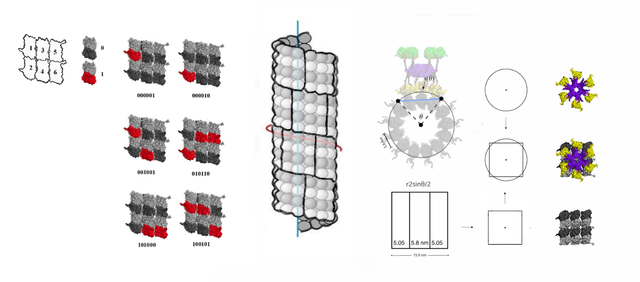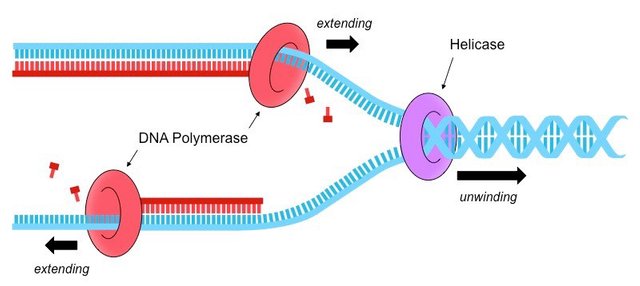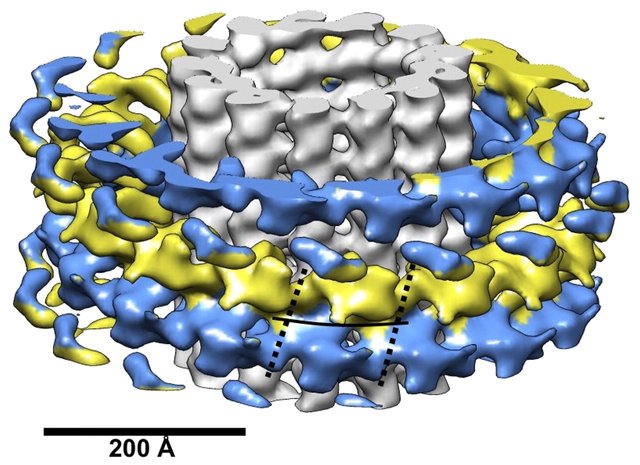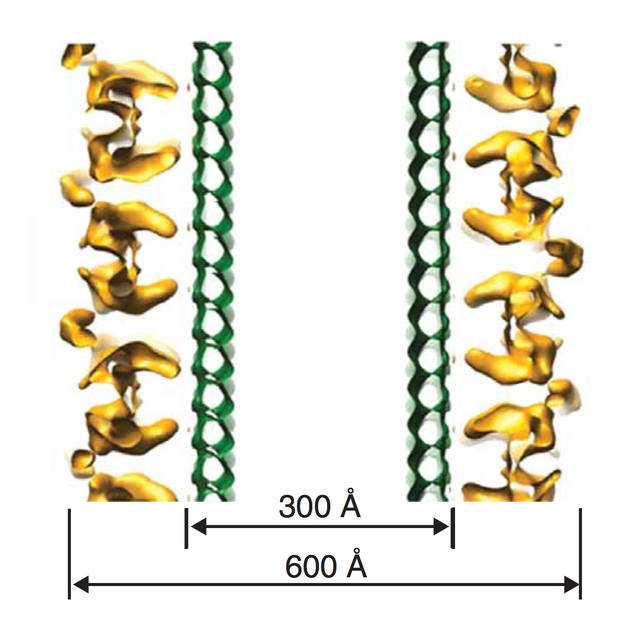The idea that the Dam1 complex is reading microtubule state, similar to how DNA polymerase reads the genome state
If microtubules are an information level in the cell, and a form of memory storage and possibly a computer, then the cell may want to retain the state of that information system when it replicates, and the mitotic spindle apparatus could be that copying process, forming two copies of the spiraeum, the cells computer.

The Dam1 complex is in vitro known to form closed rings and paired helices that encircle the MTs.[1, 2, 3] The helical configuration of Dam1 could be involved in that replication process, and somehow read, and transfer, data to facilitate the copying of the spiraeum, and slide (while rotating) along each microtubule, similar to how ring proteins are used in DNA replication.

The ring-type Dam1 is described to have 18 arms, and a two-row helical Dam1[1] with 18 arms could in a single turn read 6 blocks with 3 tubulin columns per block, then rotate 18 filaments, 18/13*360° = 500°, while sliding along the MT, read 6 new blocks, then rotate, and so on.

Wang, Ramey and Westermann show how the paired helical Dam1 aligns with two rows of tubulin dimers[3], which fits with a 6-tubulin memory block.
